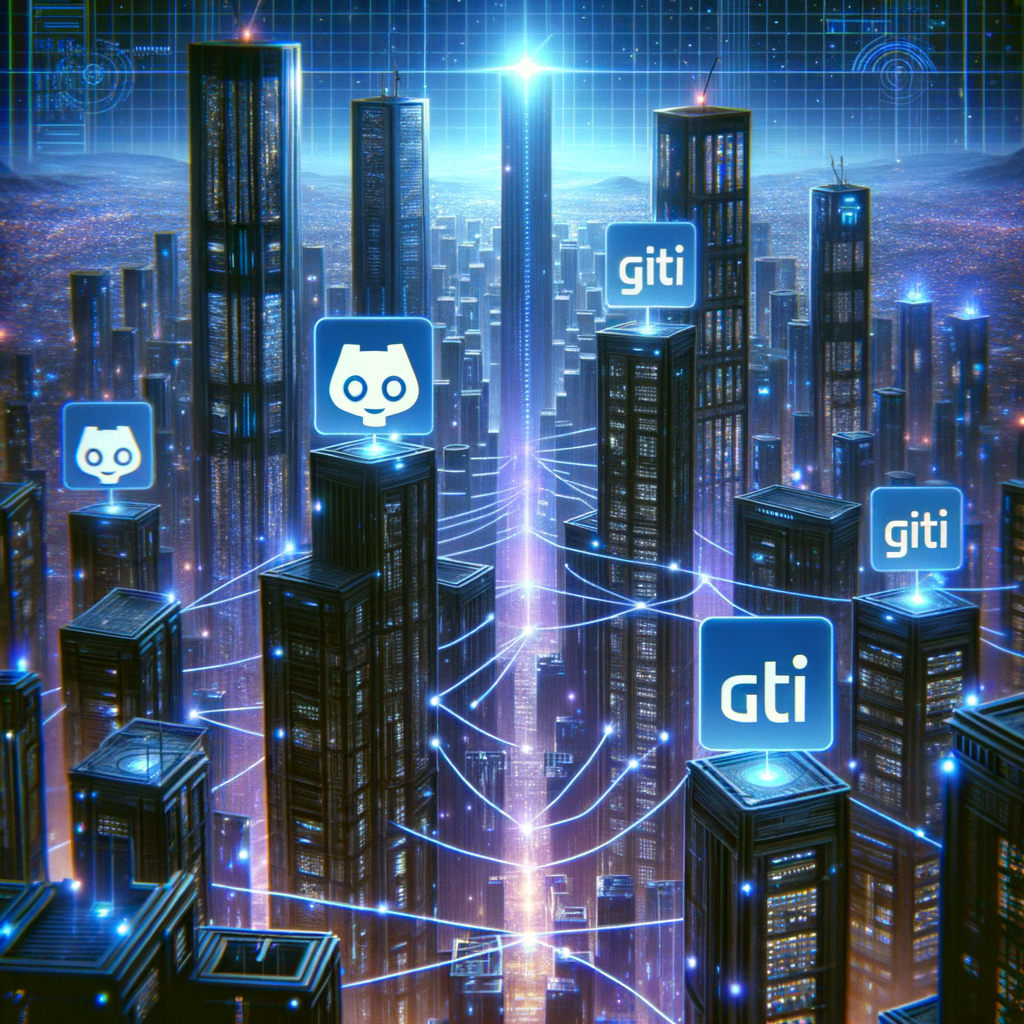Published by Contentify AI
- Why Learn Laravel?
- Getting Started with Laravel
- Key Features of Laravel
- Common Challenges Faced by Beginners
- Best Practices for Learning Laravel
Why Learn Laravel?
Laravel has quickly become one of the most popular PHP frameworks for web development, and it’s no wonder why. Its elegant syntax and powerful tools make it an ideal choice for both beginners and seasoned developers. One of the primary benefits of learning Laravel is its robust ecosystem, which includes built-in support for essential tasks like routing, authentication, and caching. This can significantly speed up the development process, allowing you to focus more on creating unique features for your application.
Moreover, Laravel’s extensive documentation and active community provide a wealth of resources for new learners. This means you can find answers to common questions and challenges quickly, making the learning curve much more manageable. Another compelling reason to learn Laravel is its scalability. Whether you’re building a small personal project or a large enterprise application, Laravel can handle it all, offering you the flexibility to grow your projects as needed.
Additionally, Laravel adheres to the Model-View-Controller (MVC) architectural pattern, promoting organized and maintainable code. This makes it easier to develop, test, and deploy applications, which is crucial for long-term project success. The Ultimate Guide to Laravel for Beginners will help you navigate these advantages and more, setting you on the path to becoming proficient in this powerful framework.
Getting Started with Laravel
To begin your journey with Laravel, the first step is to install it. Laravel requires Composer, a dependency management tool for PHP, to handle its packages. Once Composer is installed, you can create a new Laravel project by running a simple command: `composer create-project –prefer-dist laravel/laravel blog`. This command sets up a new Laravel application in a directory named “blog.”
After installation, understanding the directory structure of Laravel is crucial as it helps you navigate through the framework efficiently. Key directories include `app` for application logic, `config` for configuration files, and `routes` for defining route files. Familiarizing yourself with these directories will make it easier to follow The Ultimate Guide to Laravel for Beginners.
Next, setting up your development environment is essential for a smooth development experience. Tools like Laravel Homestead or Laravel Valet can be very helpful. Homestead is a Vagrant box that provides a virtual development environment, while Valet is a minimalistic environment for Mac users.
Once your environment is set, you can start building features by creating controllers, models, and views. Laravel’s Artisan command-line tool simplifies these tasks. For instance, you can generate a new controller by running `php artisan make:controller MyController`. Artisan commands are an integral part of The Ultimate Guide to Laravel for Beginners, offering shortcuts to common tasks and boosting productivity.
Finally, to make your application functional, you’ll need to set up a database. Laravel supports various database systems, including MySQL, PostgreSQL, and SQLite. Configuration can be done in the `.env` file located in the root directory of your project. This file allows you to define environment variables, including your database credentials.
By following these initial steps, you’ll be well on your way to mastering Laravel, equipped with the foundational knowledge needed to delve deeper into more advanced topics.
Discover the story of Dashrath Manjhi
Learn how Nawazuddin Siddiqui prepared for his role as the Mountain Man
Key Features of Laravel
Laravel boasts an array of key features that make it an attractive choice for developers, particularly those just starting out. One of the standout features is its elegant and expressive syntax, which simplifies common tasks like routing, sessions, and caching. This is a significant advantage for beginners who are learning the intricacies of web development. The Ultimate Guide to Laravel for Beginners would be incomplete without highlighting Eloquent ORM, Laravel’s built-in Object-Relational Mapping tool. Eloquent makes interacting with databases intuitive and straightforward, allowing you to perform complex queries with minimal code.
Another core feature is Laravel’s robust security mechanisms. From hashed passwords to prepared SQL statements, Laravel offers various tools to protect your application from common security threats. For beginners, understanding these built-in security features is crucial for developing secure applications without diving deep into complex security protocols.
Laravel’s Blade templating engine is another powerful feature that enhances productivity. Blade allows you to use plain PHP code in your views and provides convenient shortcuts for common tasks like loops and conditionals. This makes it easier to create dynamic and reusable templates, a must-know for anyone following The Ultimate Guide to Laravel for Beginners.
Additionally, Laravel’s built-in task scheduler and queuing system allow for efficient background job processing. These features are invaluable for applications that require time-consuming tasks to be performed asynchronously, ensuring a smooth user experience. The Task Scheduler, in particular, simplifies the management of scheduled tasks, making it accessible even for those new to the framework.
Lastly, Laravel’s extensive package ecosystem, facilitated by Composer, allows you to extend the framework’s capabilities easily. Whether you need tools for user authentication, API development, or front-end scaffolding, Laravel packages have got you covered. For beginners, this means you can quickly integrate advanced features without having to build them from scratch.
In summary, the key features of Laravel provide a robust foundation for building modern web applications. From its elegant syntax and powerful ORM to its security features and extensive package ecosystem, Laravel equips beginners with the tools they need to succeed in web development.
Related articles
Common Challenges Faced by Beginners
Beginners often face several challenges when diving into Laravel for the first time. One of the initial hurdles is grasping the framework’s robust architecture. Laravel follows the Model-View-Controller (MVC) pattern, which, while beneficial for organized development, can be overwhelming for those unfamiliar with this approach. Understanding how models, views, and controllers interact is crucial, and this is where The Ultimate Guide to Laravel for Beginners can be particularly helpful.
Another common challenge is mastering Laravel’s syntax and conventions. Laravel is known for its elegant syntax, but this elegance comes with its own set of rules and best practices. For beginners, it can be difficult to keep up with the framework’s conventions for naming, file organization, and coding standards. This often leads to confusion and errors, especially when trying to debug issues or follow tutorials.
Database management is another area where beginners often struggle. Laravel’s Eloquent ORM is powerful, but its complexity can be a double-edged sword. Understanding how to define relationships, query data, and manage migrations requires a solid grasp of both SQL and Eloquent’s specific syntax. For those just starting out, this learning curve can be steep and frustrating.
Additionally, configuring the development environment can pose challenges. Laravel offers various tools like Homestead and Valet to streamline this process, but setting them up correctly requires familiarity with virtualization and command-line interfaces. Beginners might find it daunting to troubleshoot issues that arise during setup, which can hinder their progress.
Finally, managing dependencies and packages with Composer can be another stumbling block. While Composer simplifies package management, beginners often encounter issues with version conflicts or outdated packages. Knowing how to resolve these conflicts and keep dependencies up-to-date is essential for smooth development.
Navigating these challenges requires patience and practice. The Ultimate Guide to Laravel for Beginners aims to address these common issues by providing clear, step-by-step instructions and practical tips. By understanding and overcoming these challenges, beginners can build a strong foundation in Laravel and confidently advance to more complex projects.
Best Practices for Learning Laravel
Embracing best practices is key to effectively learning Laravel and accelerating your journey from novice to proficient developer. One fundamental practice is thoroughly familiarizing yourself with Laravel’s official documentation. This resource is comprehensive and regularly updated, offering clear explanations and code examples that align perfectly with the framework’s latest versions. By consistently referring to the documentation, you ensure that you are learning based on accurate and current information.
Another crucial practice is building small, manageable projects. While it might be tempting to dive into complex applications right away, starting with simpler projects allows you to grasp Laravel’s core concepts more solidly. These projects serve as practical exercises, reinforcing your understanding of routing, controllers, views, and other foundational elements. Over time, as your confidence grows, you can gradually tackle more intricate projects, applying the principles learned from The Ultimate Guide to Laravel for Beginners.
Engaging with the Laravel community is also highly beneficial. Whether through forums, social media groups, or local meetups, interacting with other Laravel developers provides opportunities to learn from their experiences, get feedback on your code, and stay updated on best practices. Communities like Laracasts offer a wealth of tutorials and courses specifically tailored for Laravel beginners. This collective knowledge can be a significant asset in your learning journey.
Consistently practicing test-driven development (TDD) is another best practice. Laravel comes with built-in support for PHPUnit, allowing you to write and run tests for your application. Writing tests may seem daunting at first, but it ensures your code is reliable and maintainable. Moreover, it instills a disciplined approach to coding, which is invaluable in professional development environments.
Leveraging version control systems like Git is essential for tracking changes and collaborating on projects. Regularly committing your code and using branches to manage different features or fixes can prevent many common pitfalls associated with code management. Platforms like GitHub or GitLab can serve as repositories for your projects, showcasing your progress and facilitating collaborative efforts.
Lastly, staying updated with Laravel’s latest releases and improvements is important. Laravel undergoes regular updates that introduce new features and optimizations. Keeping your knowledge current ensures that you are leveraging the latest tools and best practices in your projects. Subscribing to newsletters, following Laravel’s official blog, and regularly reviewing The Ultimate Guide to Laravel for Beginners can help you stay informed.
By adhering to these best practices, you set a solid foundation for successful learning and application of Laravel. This disciplined approach not only enhances your proficiency but also prepares you for the real-world challenges of















Leave a Reply